Kimchi jjigae is a Korean stew made with aged kimchi, pork belly, and tofu. This easy recipe offers classic Korean comfort with simple steps. Perfect for a cozy meal at home.
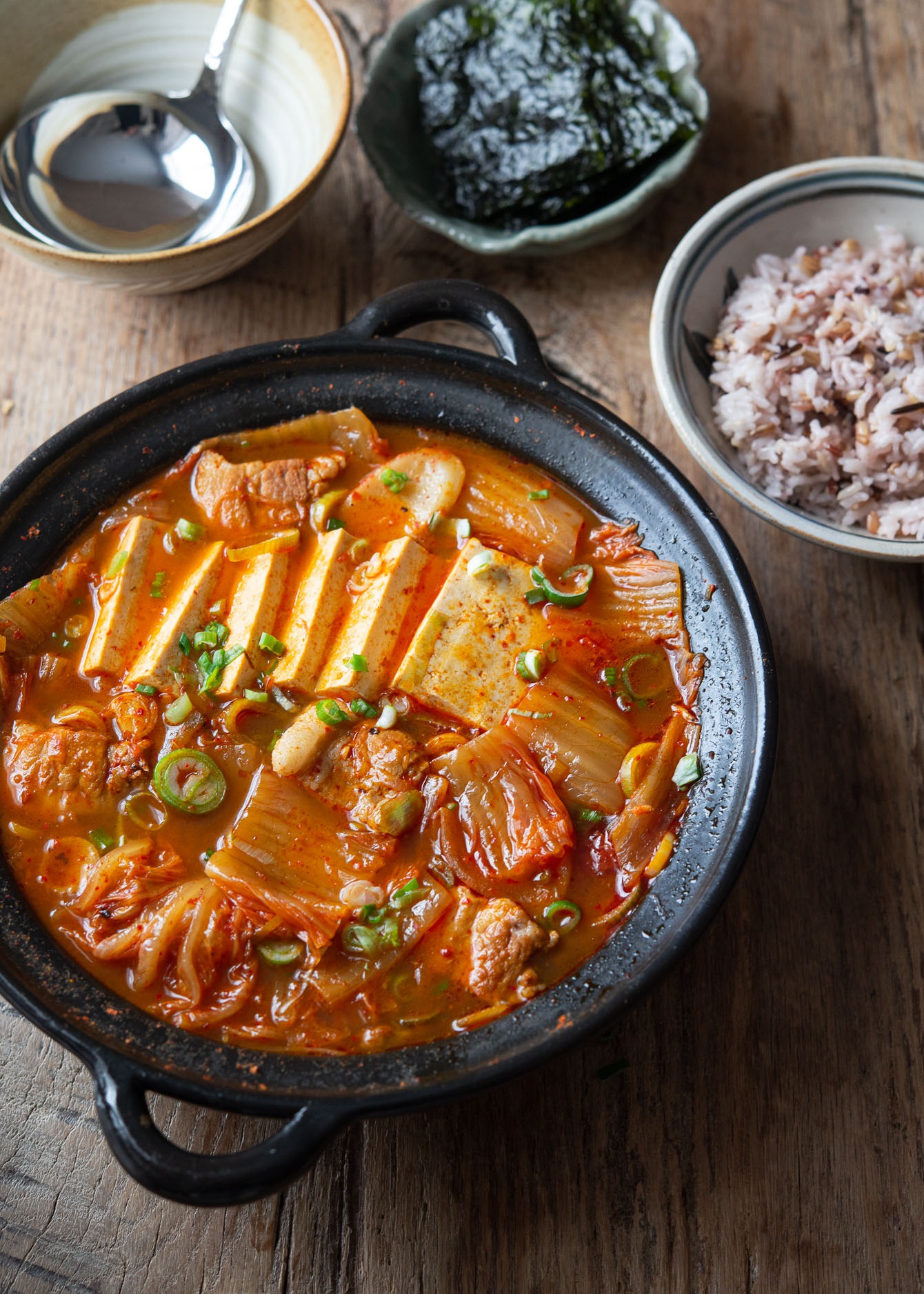

Being Korean, I always have a jar of overly fermented kimchi taking up space in the back of the fridge. Can anyone relate?
The great thing about kimchi is that you can turn old kimchi into something delicious. Kimchi jjigae always comes to mind first. The next runner-up would be kimchi fried riceof course.
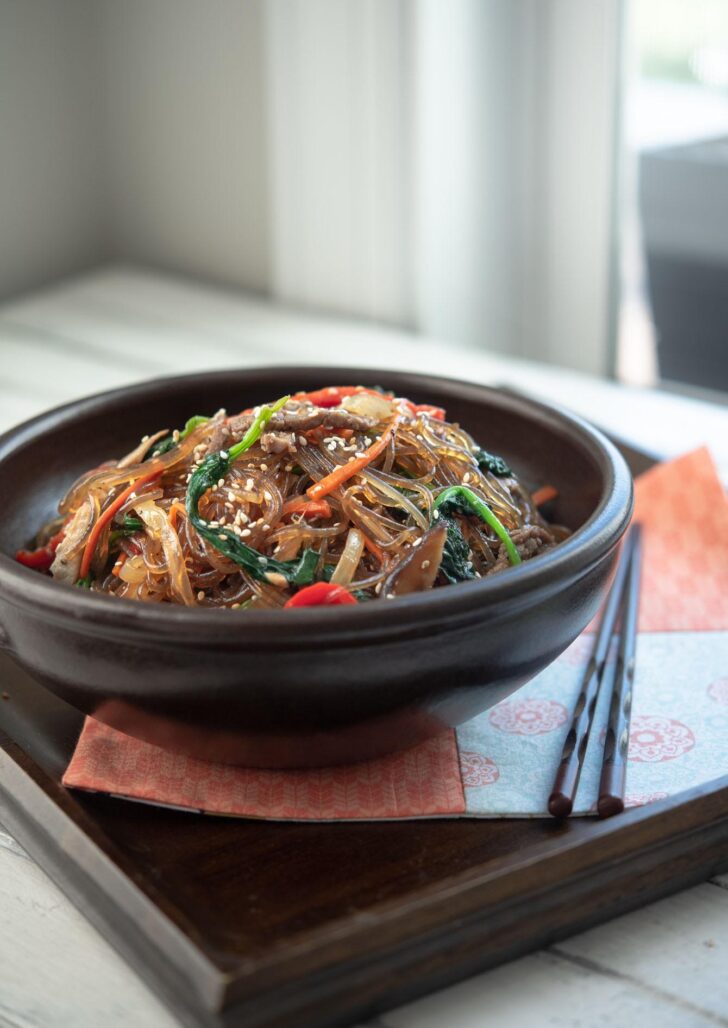

Get new recipes via email:
I don’t know how I never got tired of kimchi jjigae, even as a child when my mother made this stew over and over. A bowl of warm, hearty, and slightly tangy kimchi stew is the ultimate Korean comfort food, and I craved it all the time.
If you’re looking for a classic Korean kimchi stew recipe, this pork kimchi jjigae is a must-try. Loaded with sour kimchi, generous amounts of fatty pork, and soft tofu chunks that soaks up all the robust flavors of the tangy jjigae broth, I’m salivating just thinking about it.
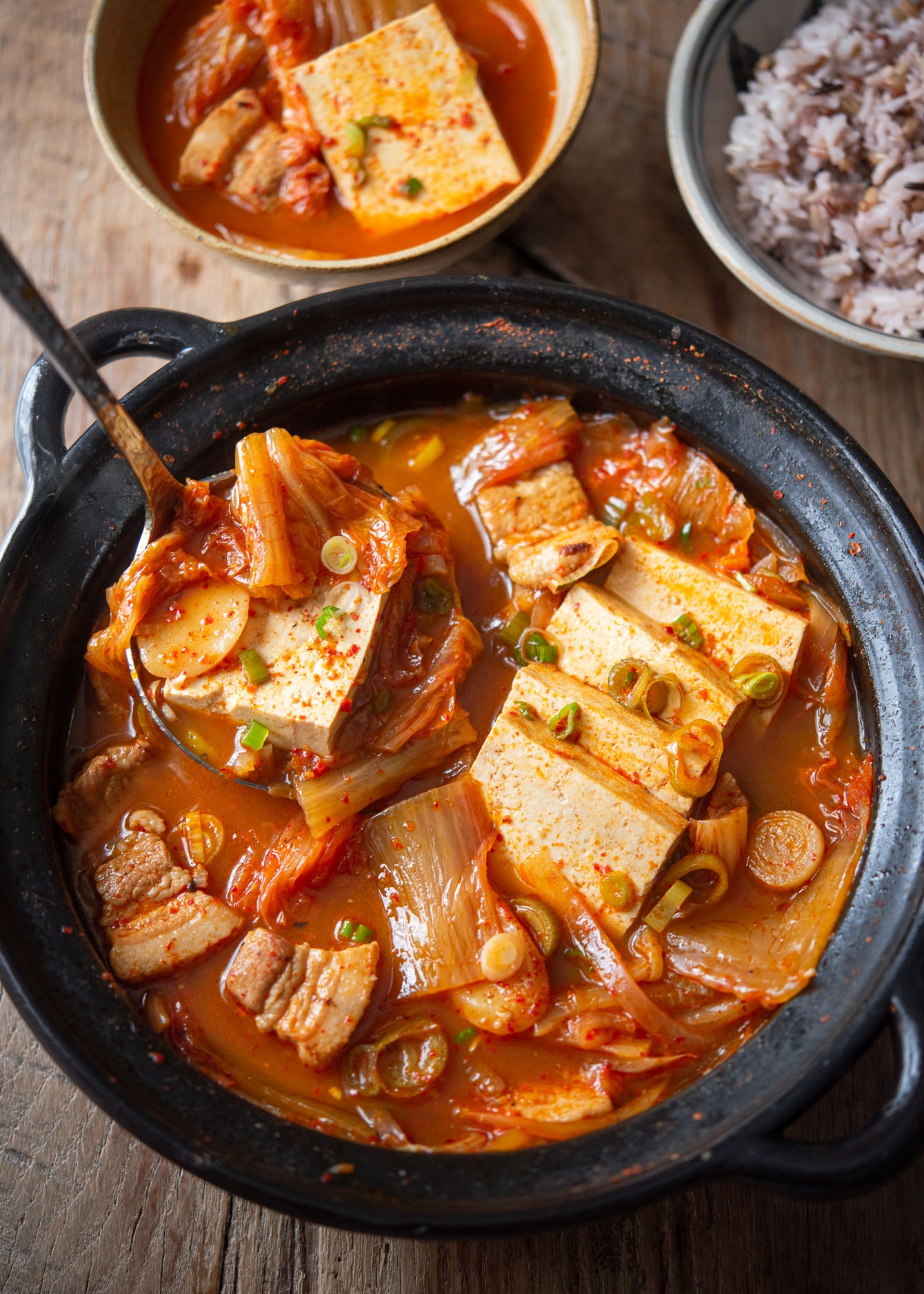

What is Kimchi Jjigae?
For those who are not familiar with Korean cuisinekimchi jjigae is a traditional Korean stew made with kimchi. It’s one of the most popular comfort foods in Korea.
The main ingredient is fermented cabbage kimchiwhich gives the stew its tangy flavor. Pork is the most common protein in kimchi jjigae, adding richness to the dish. However, tuna, anchovy, or mackerel are also commonly used alternatives. Check out my recipes for anchovy kimchi stew and mackerel pike kimchi stew for other unique takes on this classic dish.
Along with pork, tofu is added to soak up the delicious broth. The stew cooks until all the flavors blend together but doesn’t need a long simmering time like Western stews. Typically served with a bowl of rice, it makes for a satisfying meal, especially on cold days.
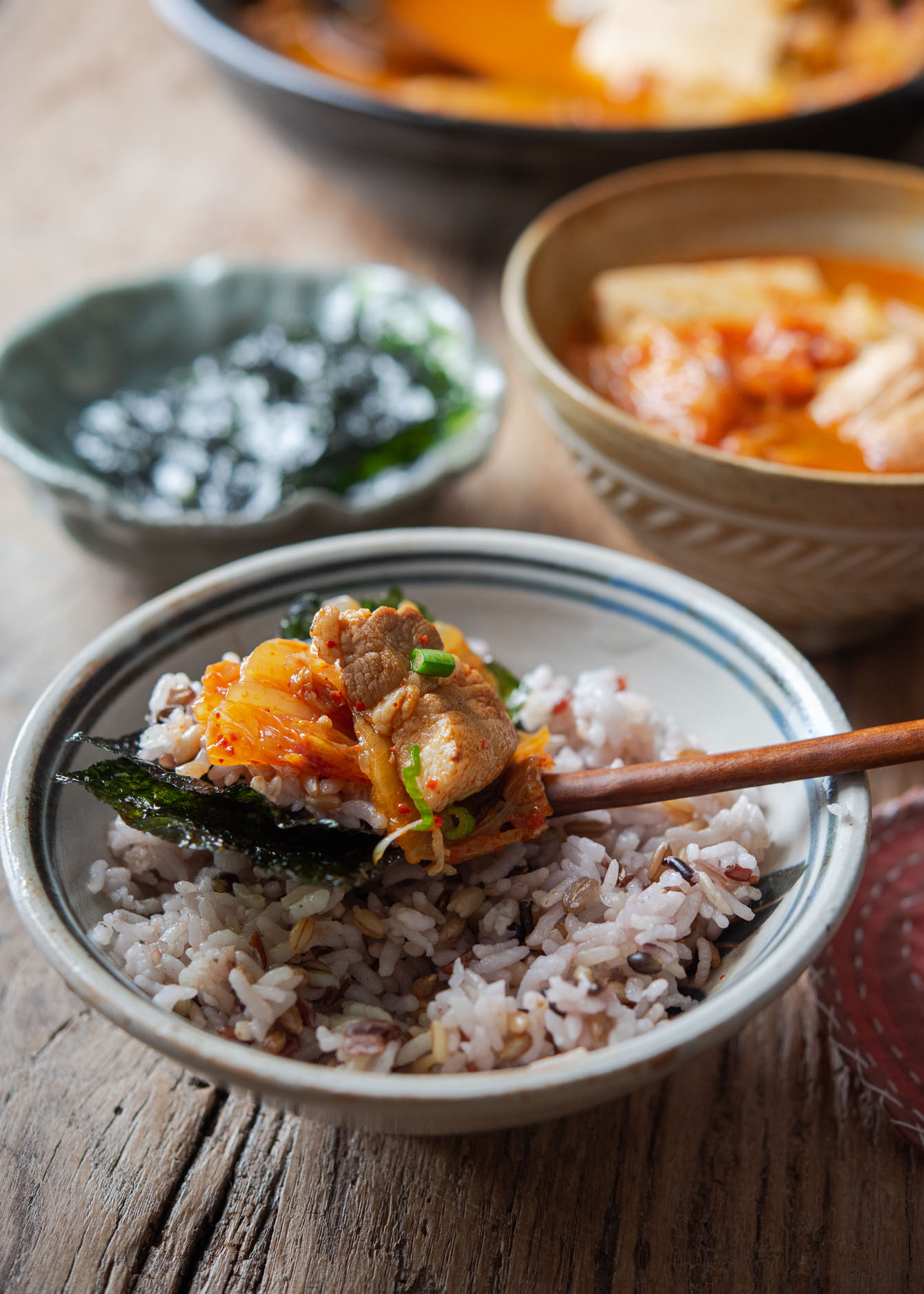

Kimchi and Pork
Kimchi and pork is a match made in heaven. The rich, savory flavors of pork perfectly complement the tangy, spicy kick of kimchi.
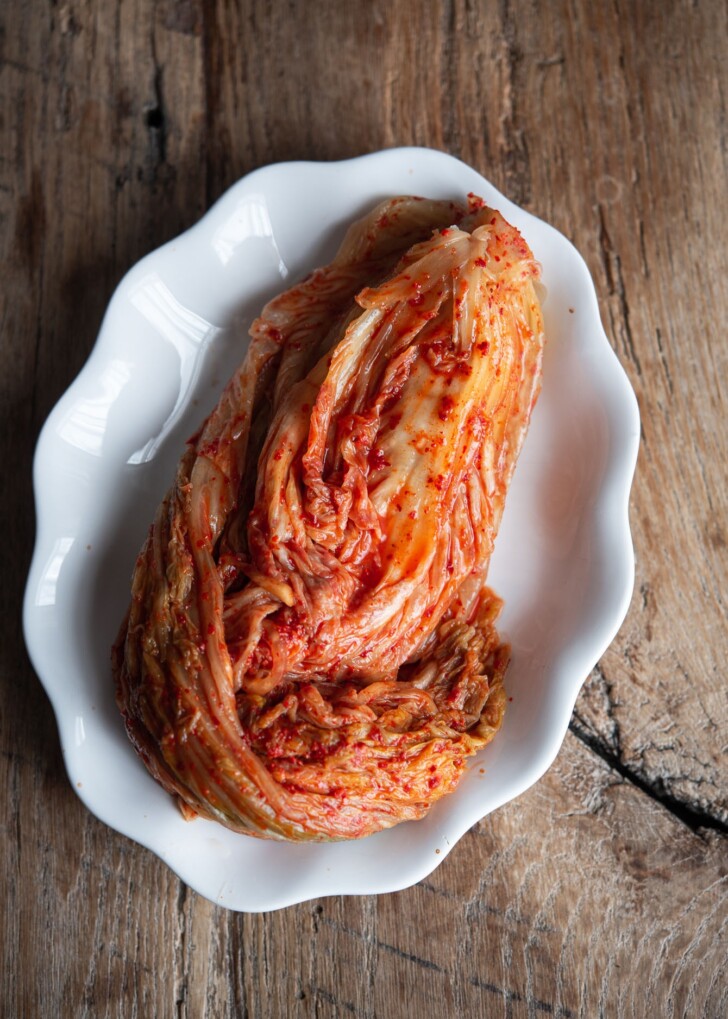

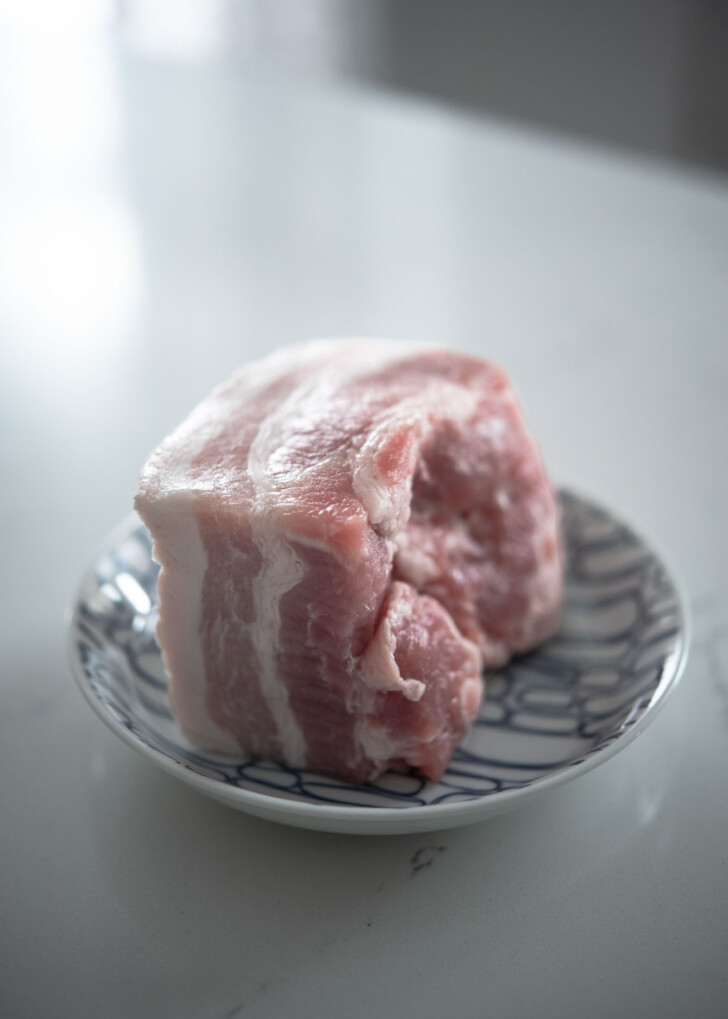

For the best results in your stew, always use fully fermented kimchi. If your kimchi isn’t sour enough, let it sit in a warm place for 1-2 days to develop the tangy flavor quickly. If it’s too sour, adding a spoonful of sugar can help balance the taste.
When it comes to the pork, the fattier, the better! Pork belly works best because it renders a rich flavor. Lean pork can work too, but it won’t be as flavorful.
How to make Pork Kimchi Jjigae
Cook pork belly
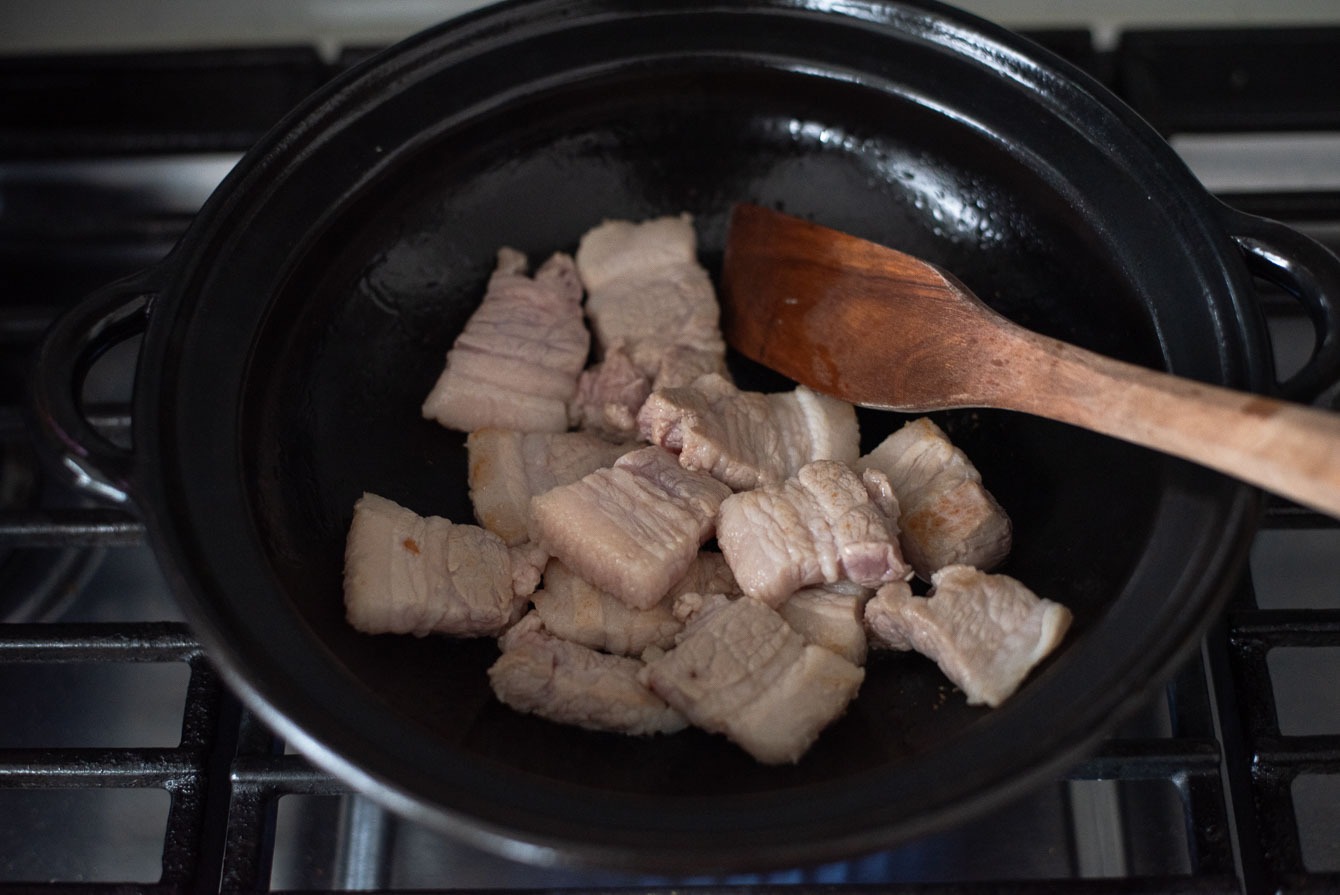

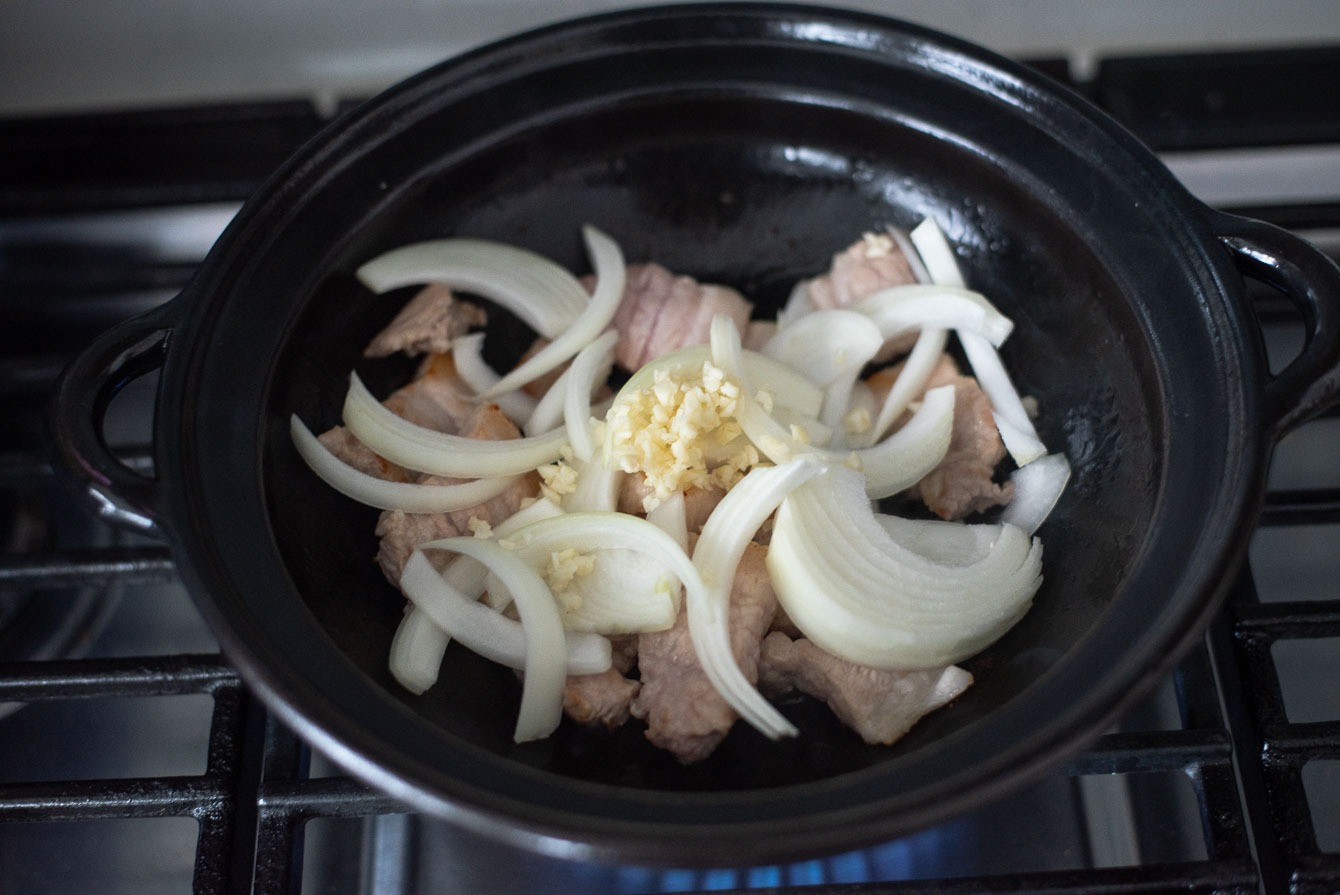

Heat oil in a pot over medium-high heat. Cook the pork belly until thoroughly done. Add onion and garlic, and cook for 1 minute.
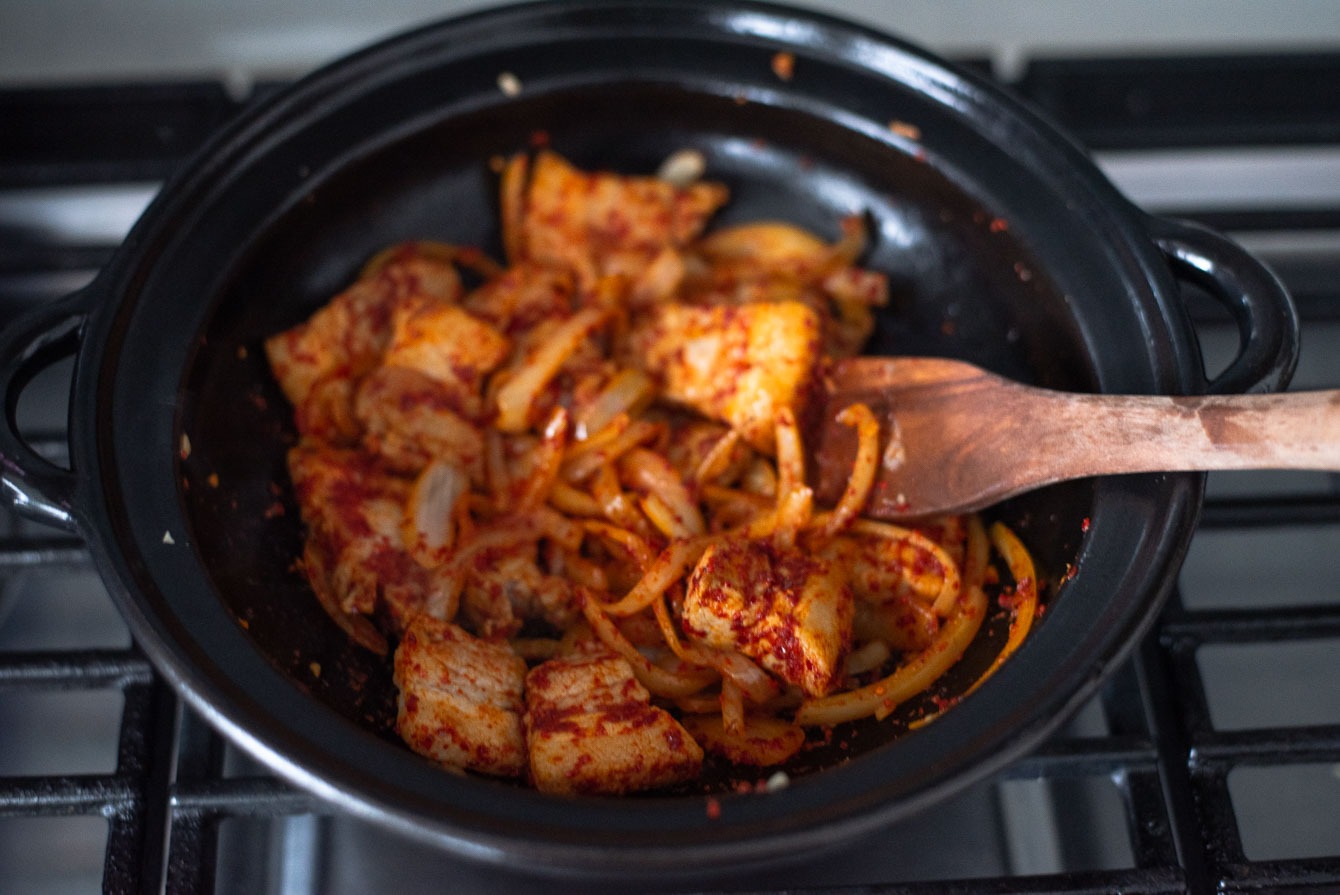

If desired, sprinkle a bit of Korean chili flakes (gochugaru) and toss to coat everything evenly.
Add kimchi and kimchi brine
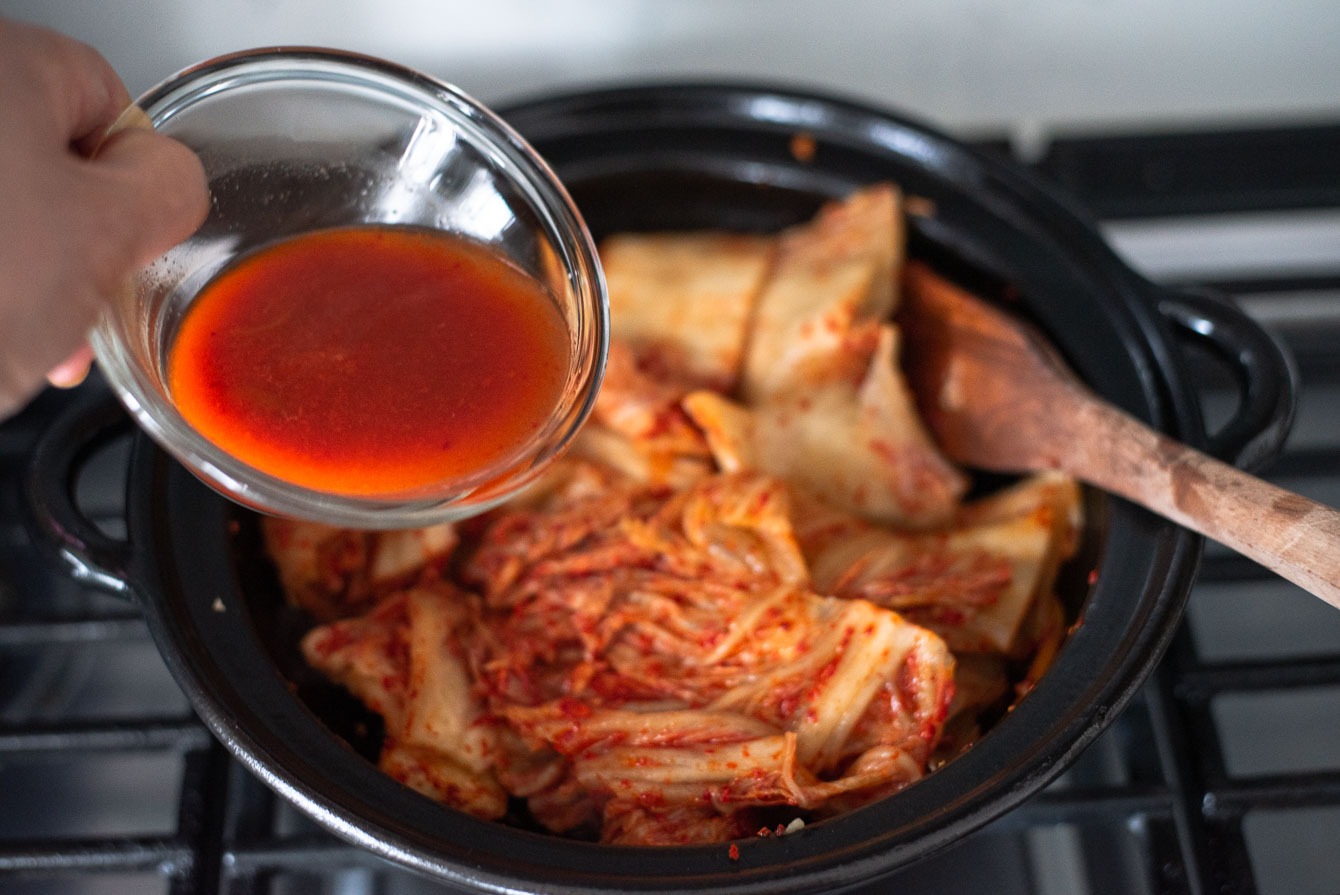

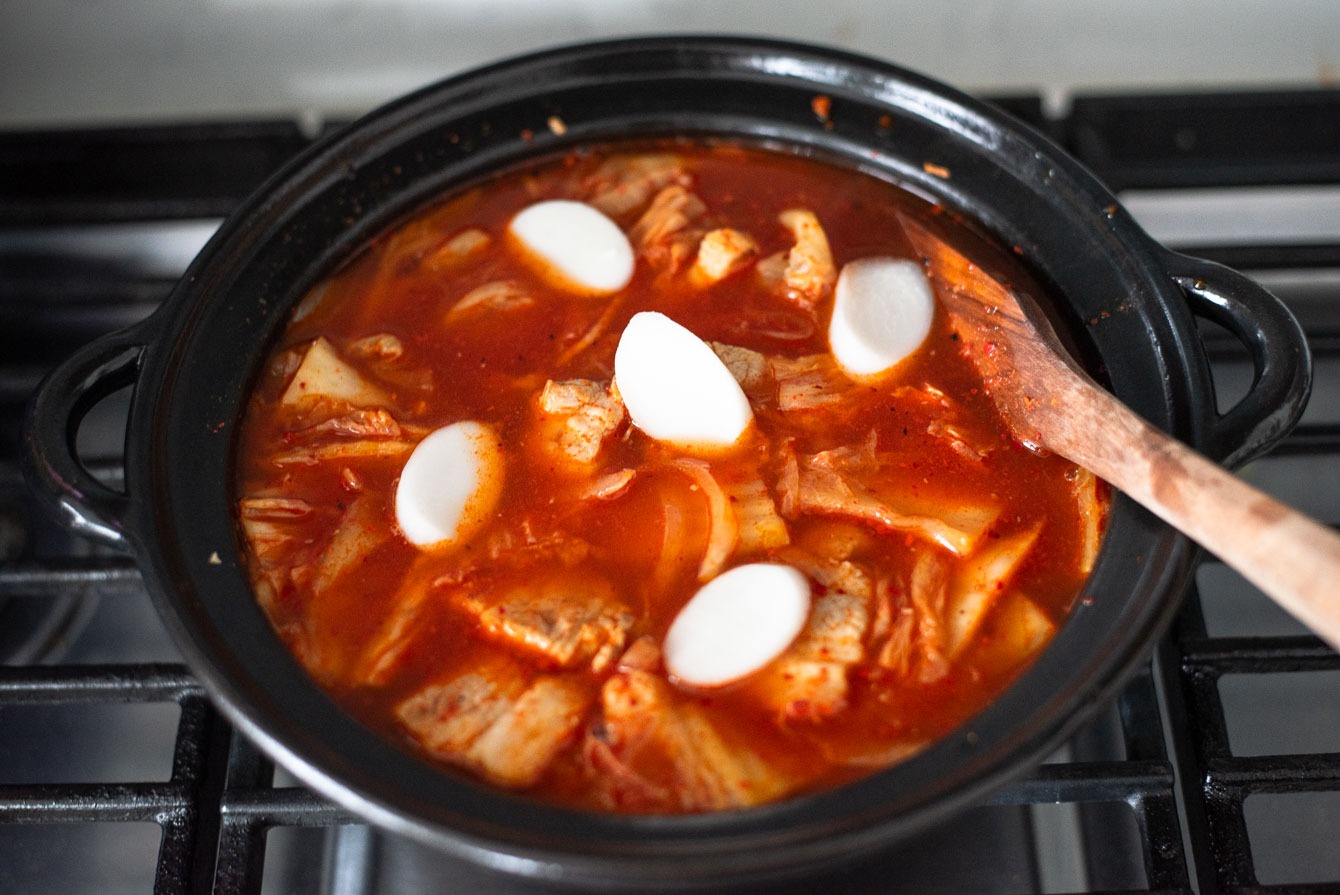

Combine kimchi, kimchi juice, water, and rice cakes (if using) in the pot. Cover and bring to a boil, then reduce the heat to low and simmer for 15-20 minutes.
Season the Stew
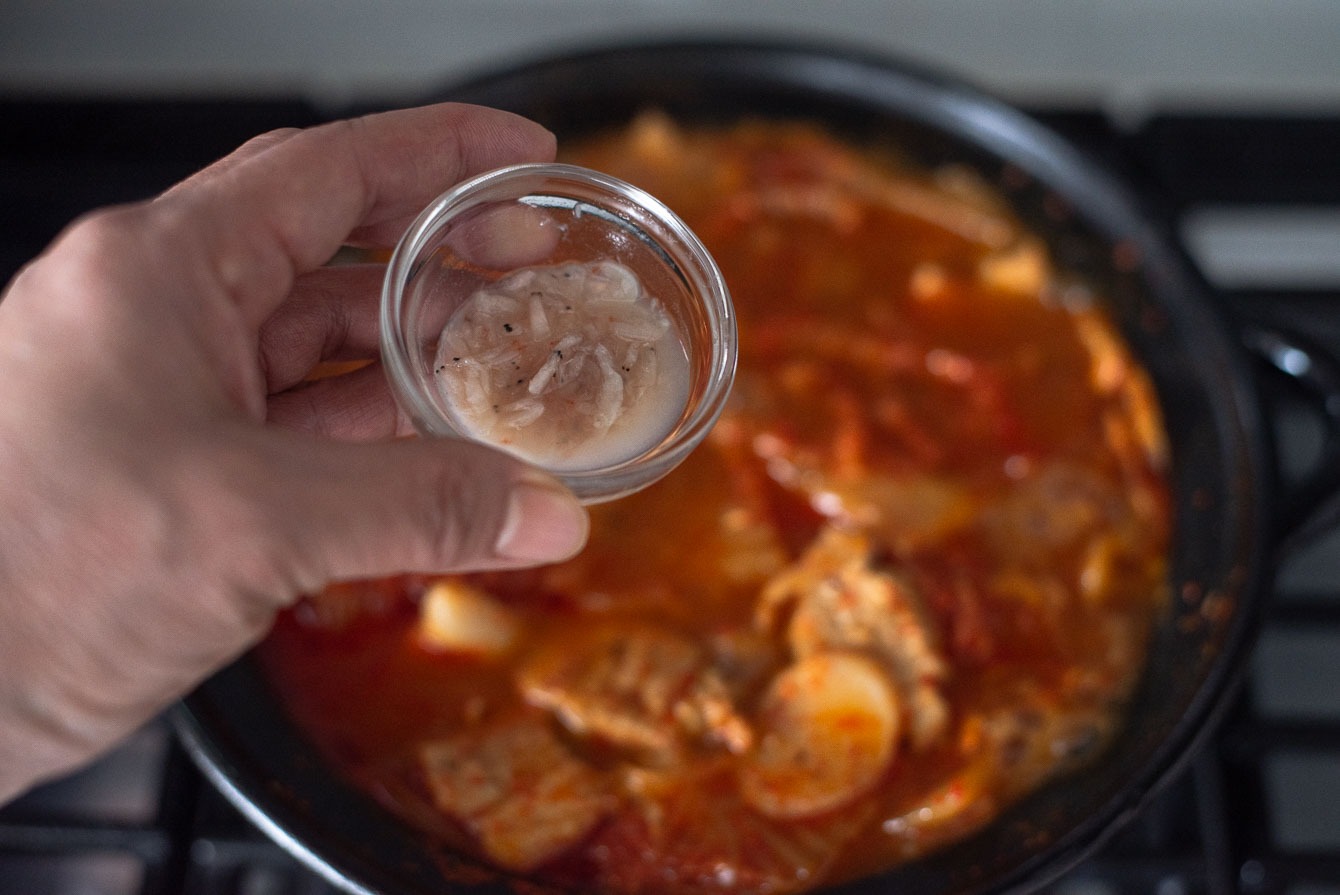

Season with salted shrimp snd Korean soup soy sauce. Taste, and add more salt if needed for seasoning.
Add Tofu
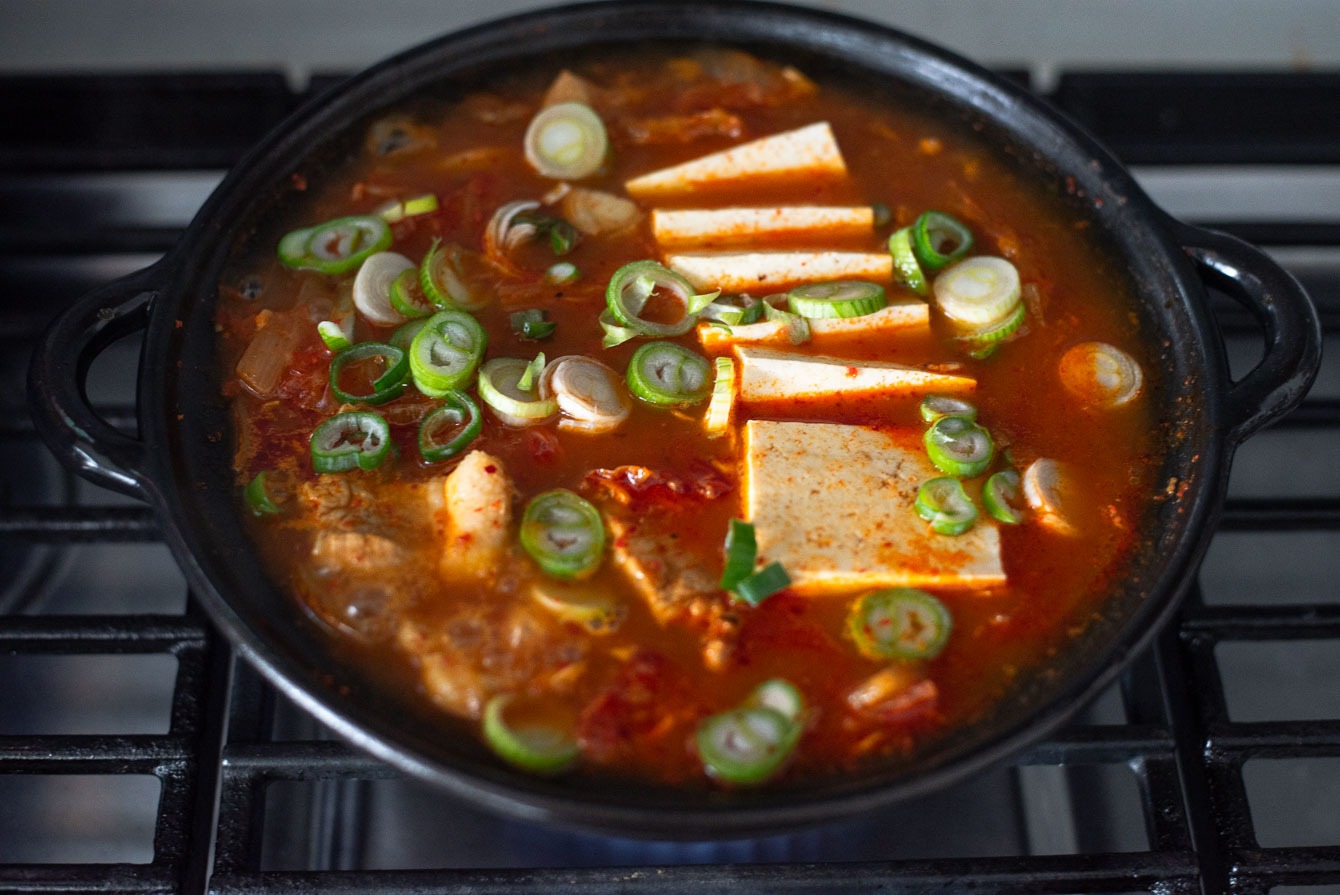

Add tofu slices and simmer for an additional 5 minutes. Just before serving, garnish with green onion.
Cooking Tips for Best Kimchi Jjigae
- Use very old, sour cabbage kimchi – a great way to use up extra kimchi that’s been taking up space in the fridge.
- The fattier the pork, the better it tastes. Fat builds the flavor. I recommend using pork belly or pork shoulder with a layer of fat attached.
- Don’t skip the kimchi juice (or kimchi liquid). It has all the good taste in it and adds flavor and depth to the dish.
- A hint of Korean salted shrimp deepens the flavor of broth.
- Consider adding a few pieces of rice cakes to thicken the stew broth. However, this is optional.
- Water vs anchovy stock as a soup base? Either one works. I found using plain water works better in pork kimchi stew, though. It maintains the natural flavor of pork better.
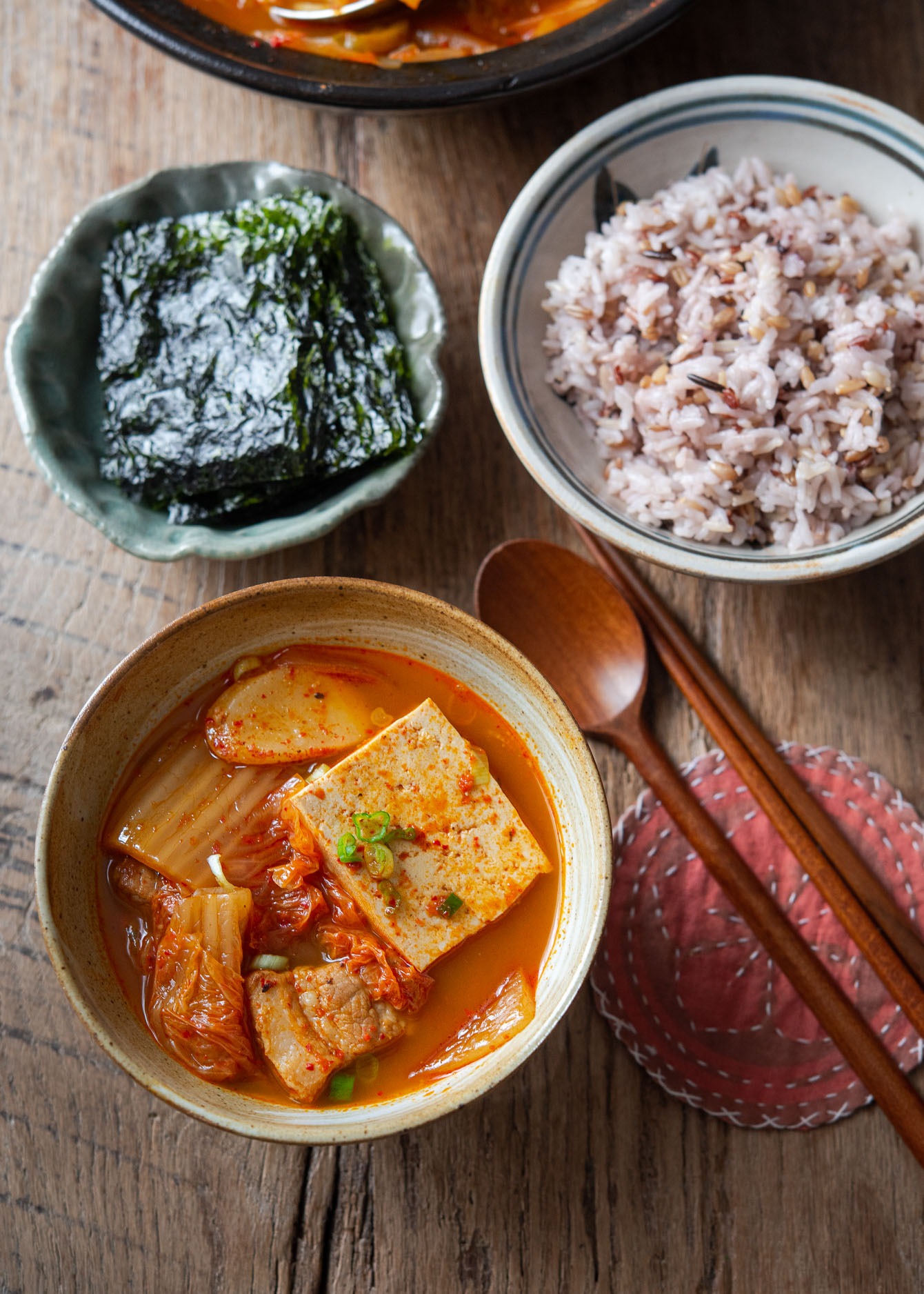

What to Eat with Kimchi Stew
A bowl of rice is a must. I also recommend trying it with roasted dried seaweed snacks called gim (김). This is a common pairing in Korean homes and restaurants. For a complete meal, try these Korean side dishes:
Storage and Reheating
The flavor of kimchi stew intensifies over time, and you can store it in the refrigerator for up to two weeks. To reheat, simply warm it in a microwave or on a stovetop until heated through.
Love this recipe? Rate it and share your experience in the comments below! On Instagram? Tag me to showcase your creation. For more delicious recipes, subscribe to our newsletter!
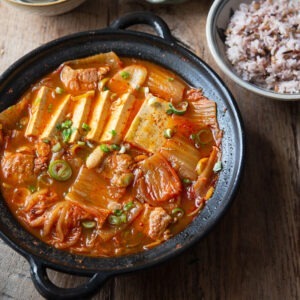

Pork Kimchi Jjigae (Classic Korean Kimchi Stew)
Kimchi jjigae is a Korean stew made with aged kimchi, pork belly, and tofu. This easy recipe offers classic Korean comfort with simple steps.
- 1 tbsp oil
- 1/2 lb pork belly, sliced
- 1/2 medium onion, sliced
- 2 cloves garlic, finely minced
- 1 tbsp Korean chili flakes (gochugaru)
- 1 lb (450 g) sour kimchi, sliced
- 4 tbsp kimchi juice
- 2 1/2 cup (600 ml) water
- 5 piece rice cake rounds, optional
- 1 tsp Korean salted shrimp
- 1 tbsp Korean soup soy sauce (gukganjang), or Korean tuna sauce
- 1/2 lb (225 g) soft tofu, sliced
- 1 green onion, chopped
- pinches salt , to taste
Calories: 392kcal, Carbohydrates: 5g, Protein: 12g, Fat: 36g, Saturated Fat: 12g, Polyunsaturated Fat: 6g, Monounsaturated Fat: 17g, Trans Fat: 1g, Cholesterol: 43mg, Sodium: 611mg, Potassium: 188mg, Fiber: 2g, Sugar: 1g, Vitamin A: 629IU, Vitamin C: 2mg, Calcium: 94mg, Iron: 2mg

